3.03.2022
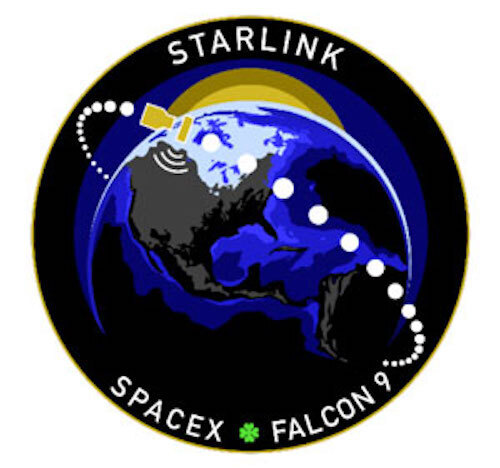
SpaceX preps for another Starlink launch as internet terminals arrive in Ukraine
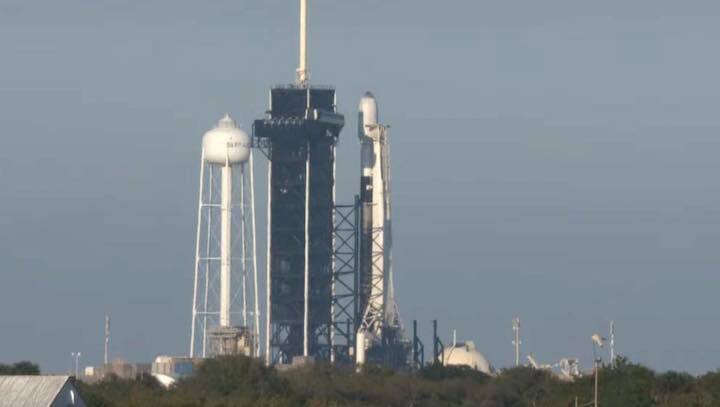
A Falcon 9 rocket stands on launch pad 39A Wednesday. Credit: Spaceflight Now
SpaceX wheeled a Falcon 9 rocket and 47 internet satellites to a launch pad Wednesday at Kennedy Space Center, ready to blast off Thursday to reinforce the Starlink constellation days after expanding the network into Ukraine amid Russia’s invasion of the country.
The launch, set for 9:35 a.m. EST (1435 GMT) Thursday, will take off from pad 39A at Kennedy, continuing SpaceX’s busy start to the year. It will be SpaceX’s ninth mission since Jan. 1, and the 10th launch from Florida’s Space Coast this year, coming less than two days after the liftoff of a United Launch Alliance Atlas 5 rocket.
With the 47 new satellites going up Thursday, SpaceX will have launched 2,234 Starlink spacecraft to date, including prototypes and older models no longer in service. Jonathan McDowell, an astrophysicist who regularly tracks spaceflight activity, estimated SpaceX had 1,945 functioning Starlink satellites in orbit, as of Wednesday.
SpaceX doesn’t release information on the health and status of its Starlink satellites.
The launch Thursday is scheduled just six days after SpaceX’s previous Starlink mission from California. SpaceX plans another Starlink launch on a Falcon 9 rocket March 8, putting the company closer to reaching a goal of deploying roughly 4,400 Starlink satellites to beam high-speed, low-latency internet services around the world.
Eventually, SpaceX has signaled in regulatory filings it wants to operate as many as 42,000 internet satellites, all flying in low Earth orbit a few hundred miles above the planet.
The number of satellites planned by SpaceX and other companies have raised questions about the safety of operations in low Earth orbit, including how the fleets might create more space debris and cause problems in managing the ever-growing number of objects circling the planet.
Astronomers have also criticized the Starlink program for ruining some telescope observations, but SpaceX has mitigated the problem by making their satellites less reflective of sunlight.
But the upside of space-based internet services was on display in recent days after SpaceX shipped Starlink antennas to Ukraine to help citizens remain connected amid Russia’s military attack, which began Feb. 24.
Two days later, Mykhailo Fedorov, Ukraine’s vice prime minister, asked Elon Musk for help on Twitter.
“While you try to colonize Mars — Russia try to occupy Ukraine!” Fedorov tweeted in a public message to Musk. “While your rockets successfully land from space — Russian rockets attack Ukrainian civil people! We ask you to provide Ukraine with Starlink stations and to address sane Russians to stand.”
Musk responded the same day that Starlink service was activated in Ukraine. A shipment of Starlink user terminals arrived in Ukraine Monday, according to Fedorov.
“Starlink keeps our cities connected and emergency services saving lives!” Fedorov tweeted Wednesday, adding that Ukraine needs electrical generators to keep Starlink and other “life-saving services” online after Russian attacks on local infrastructure.
The Falcon 9 launch Thursday will follow a similar profile as recent Starlink missions, heading southeast over the Atlantic Ocean to place the satellites into an orbital plane tilted 53.2 degrees to the equator.
The rocket’s reusable first stage is set to fly on its 11th mission, tying a record for Falcon booster reuse held by two other vehicles in SpaceX’s fleet. This booster is numbered B1060 in SpaceX’s inventory, and its first flight was in June 2020 with a U.S. Space Force GPS satellite.
Nine kerosene-fueled Merlin engines will power the Falcon 9 off the launch pad with 1.7 million pounds of thrust. The first stage will detach about two-and-a-half minutes into the mission and plunge back into the atmosphere, aiming to land on SpaceX’s drone ship “Just Read the Instructions” in the Atlantic Ocean near the Bahamas.
The second stage will fire its single engine moments before jettison of the Falcon 9’s two-piece nose cone, revealing the flat-packed, quarter-ton Starlink satellites after soaring above the boundary of space. The nose fairing shells will fall into the sea under parachute for recovery and reuse.
The upper stage will cut off at T+plus 8 minutes, 46 seconds, then began a coast over the Caribbean, South America, and the South Atlantic. A brief restart fo the upper stage engine is planned around 57 minutes into the mission to place the Starlink satellites into an orbit between 189 miles and 197 miles (305 and 317 kilometers) above Earth.
The Starlink satellites will release from Falcon 9 nearly 66 minutes after liftoff. Once free of the rocket, the spacecraft will deploy their solar panels and turn on ion engines to begin climbing to an operational altitude of 335 miles (540 kilometers).
Quelle: Spaceflight Now
+++
Start von SpaceX’s 38th Starlink v1.0 mission and 39th Starlink launch
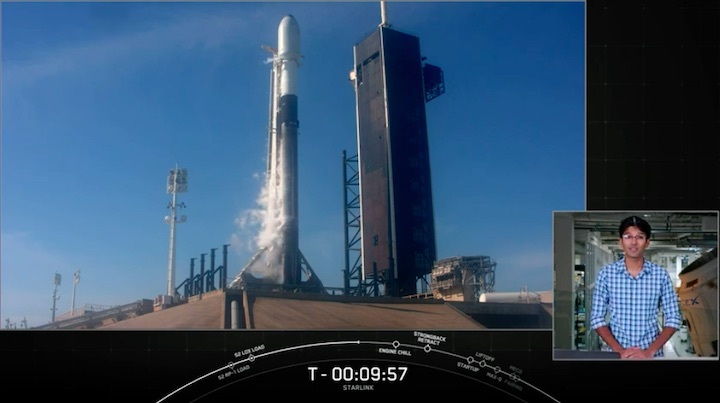
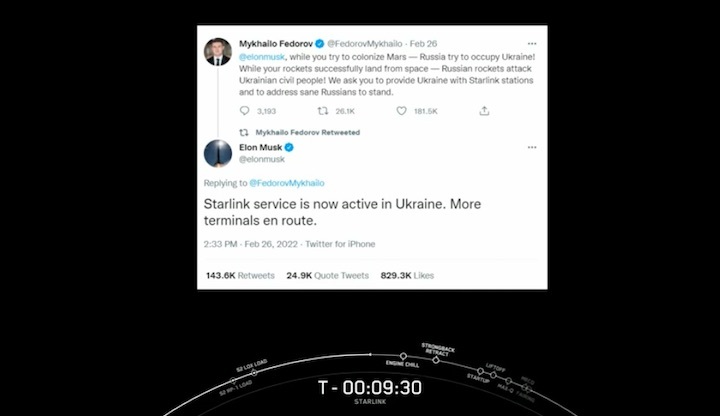
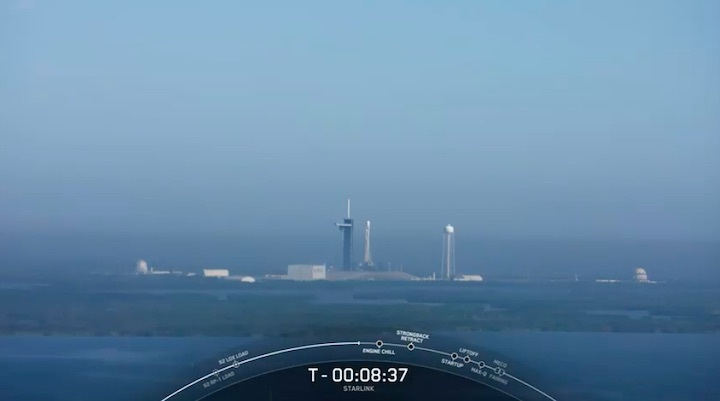
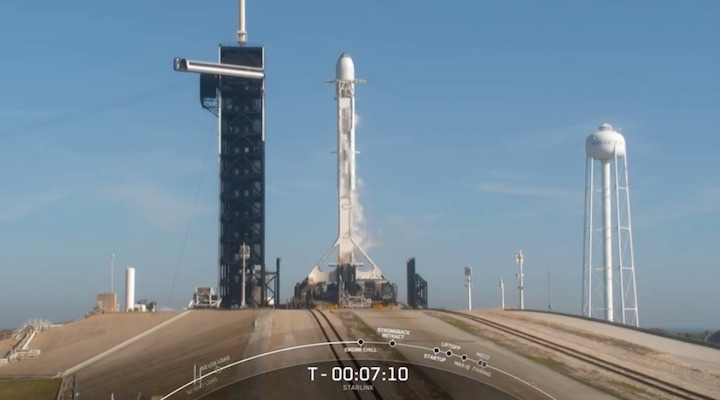
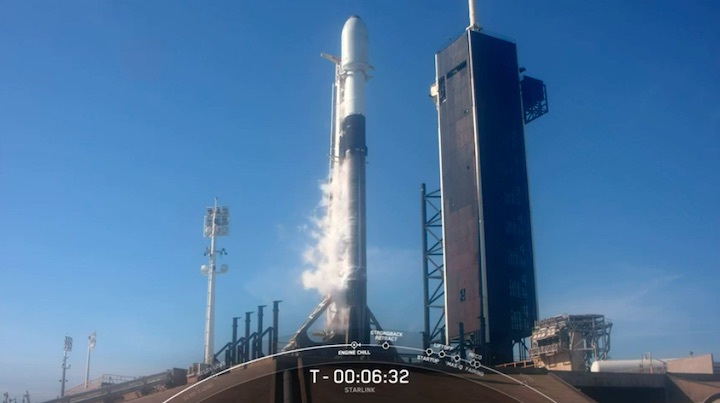
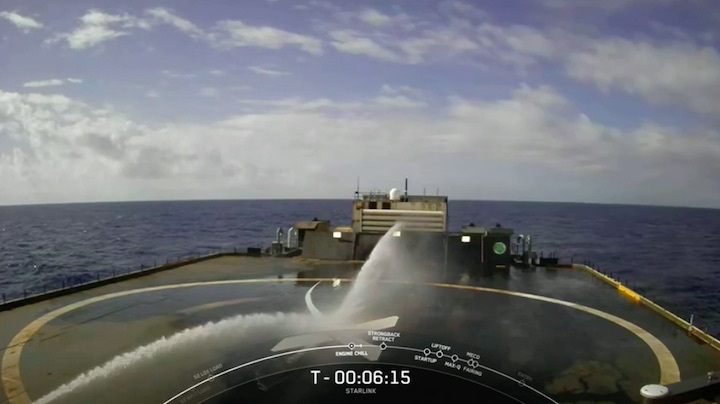
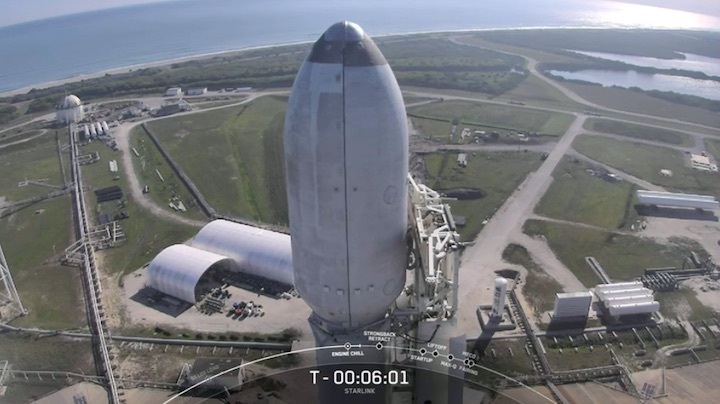
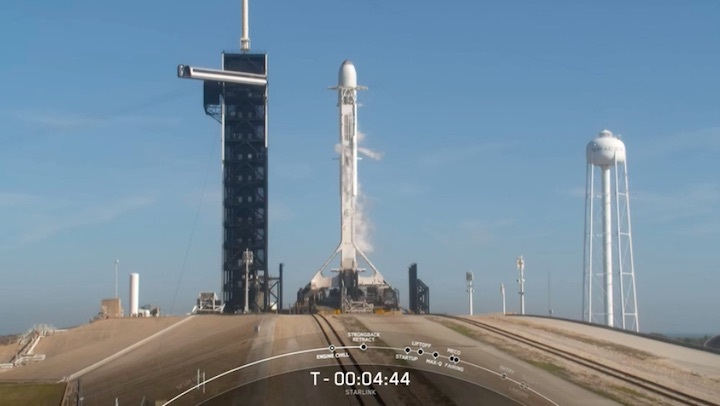
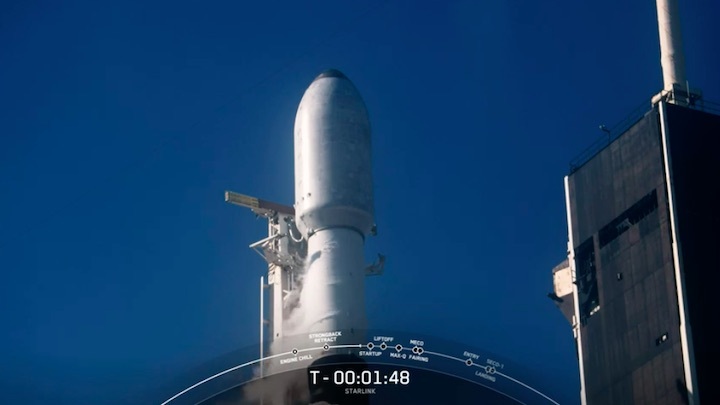
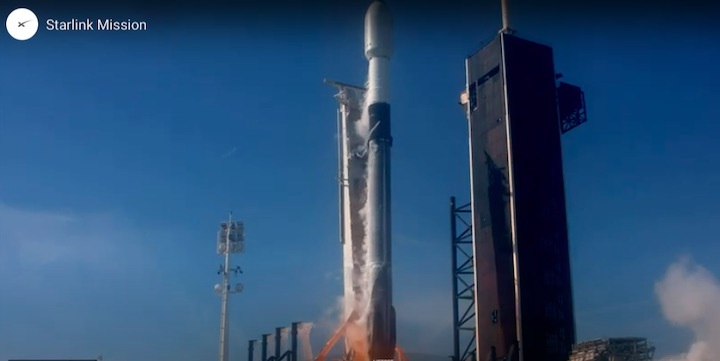
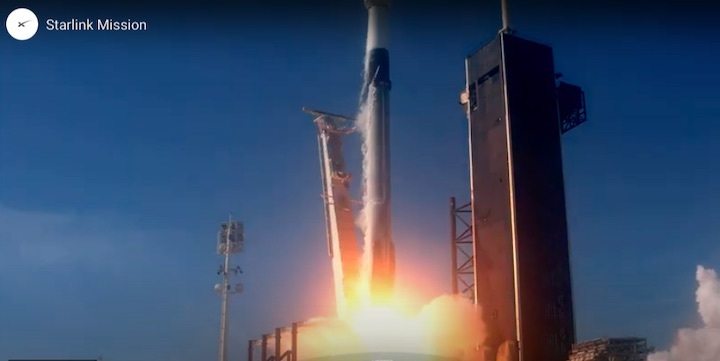
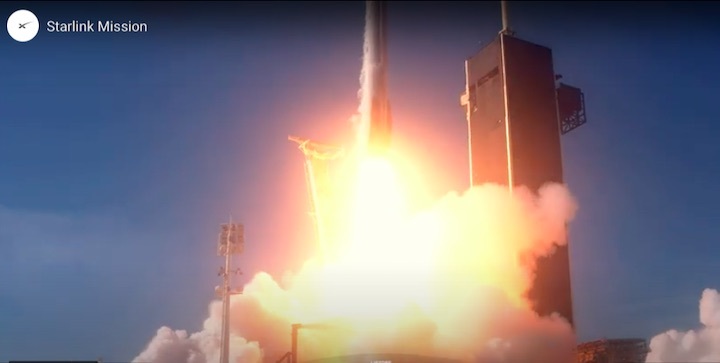
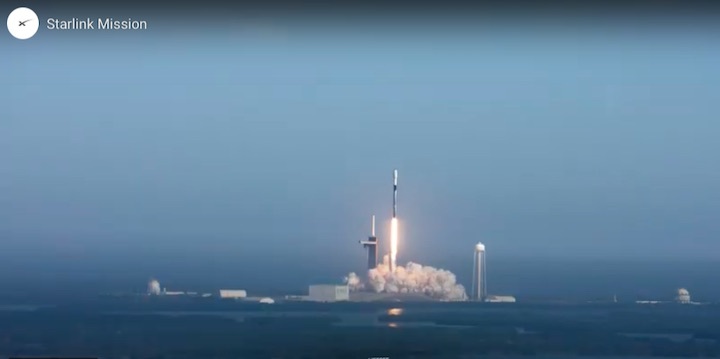

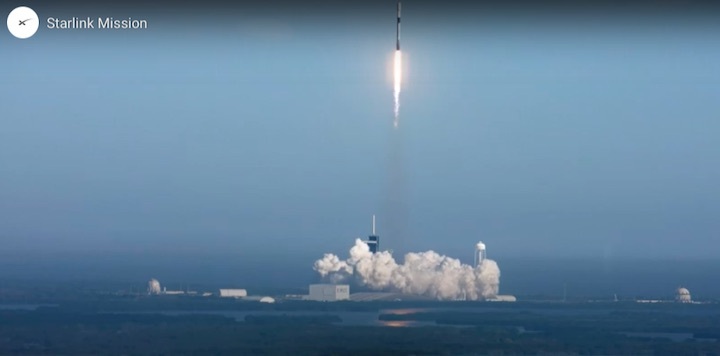
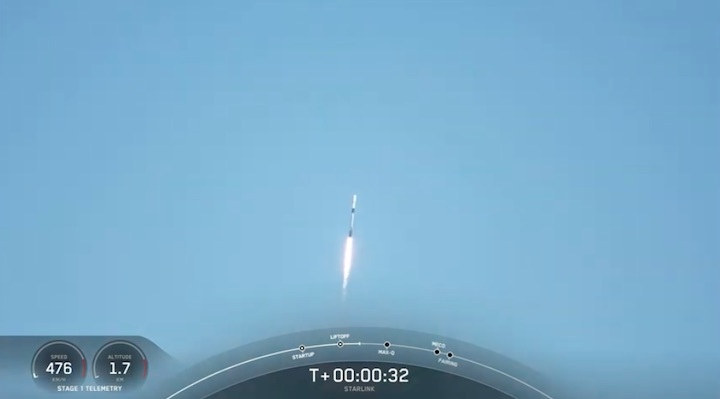

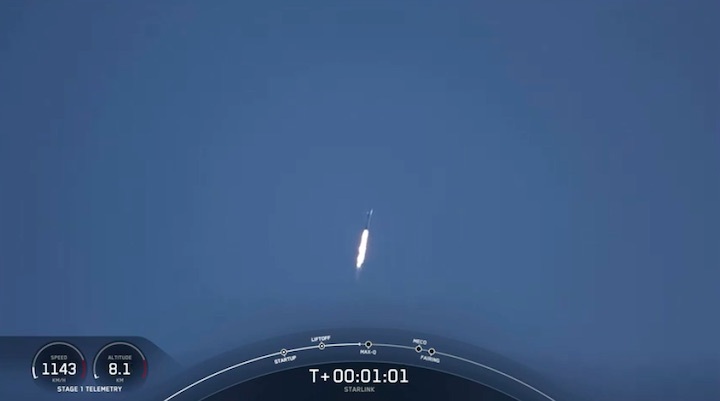
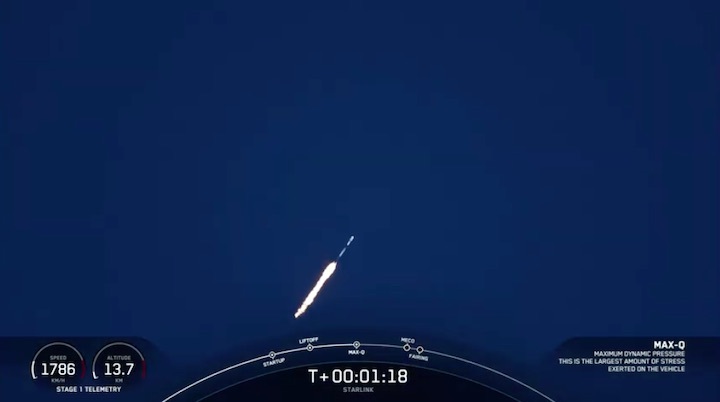
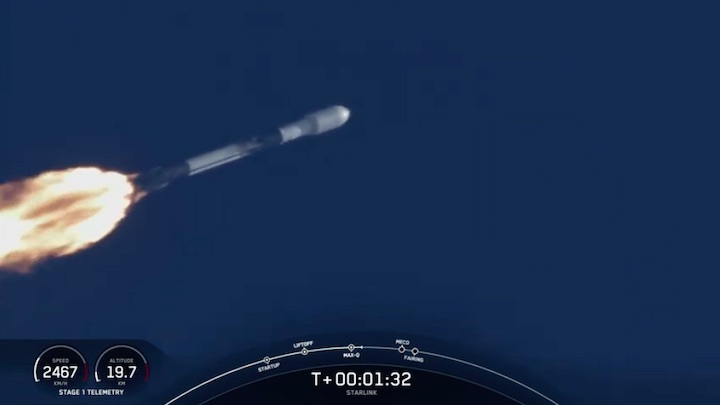
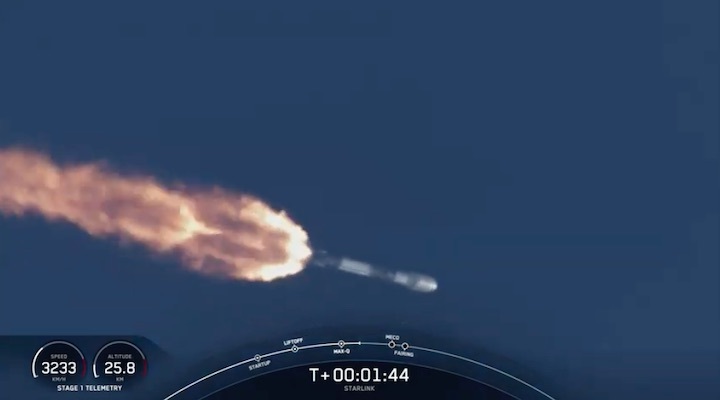
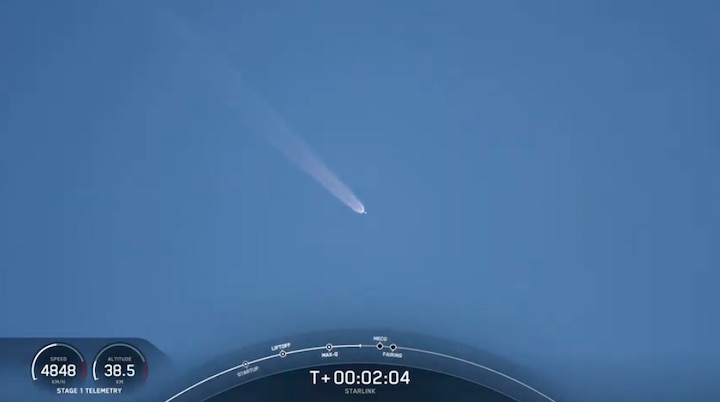
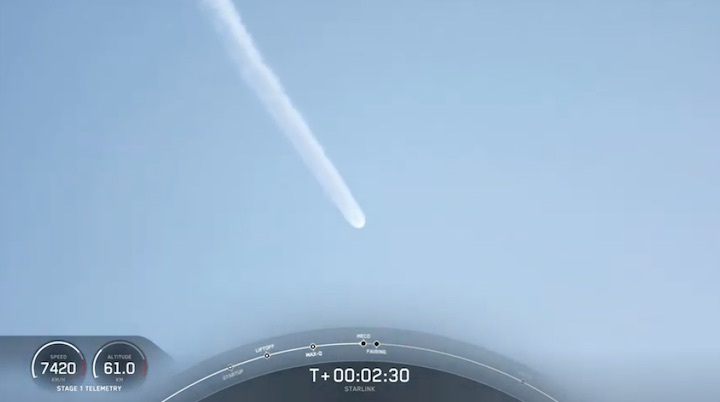

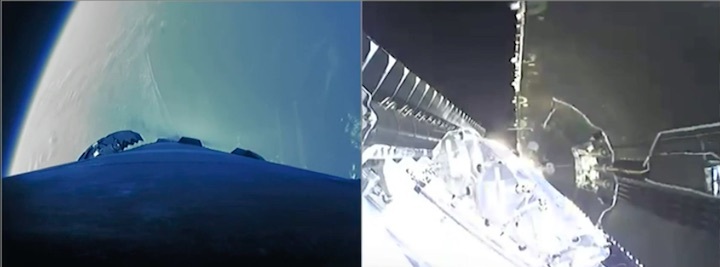
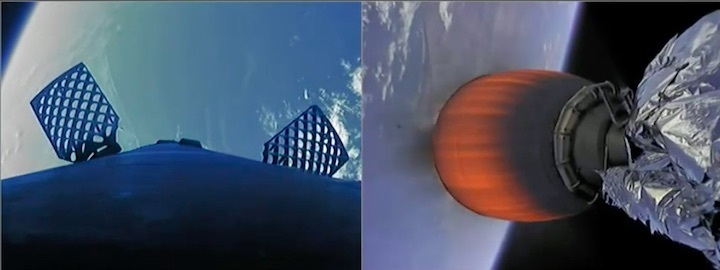
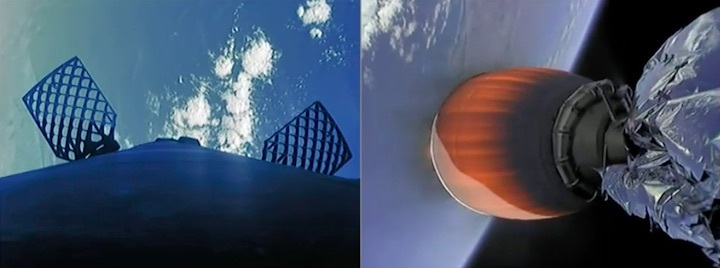
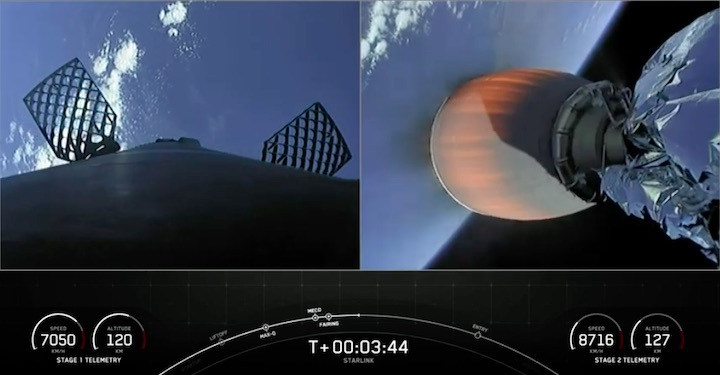
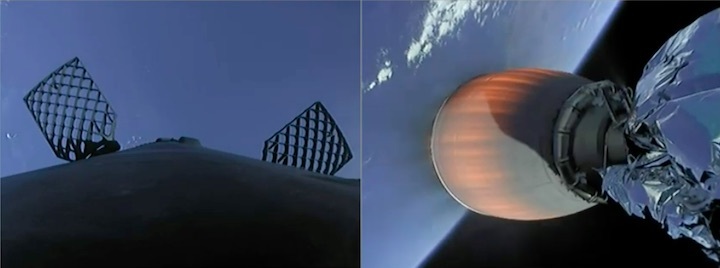
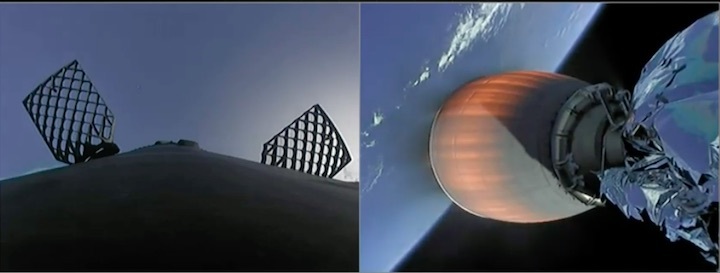
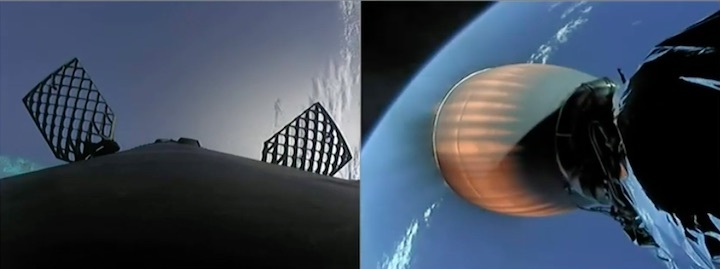
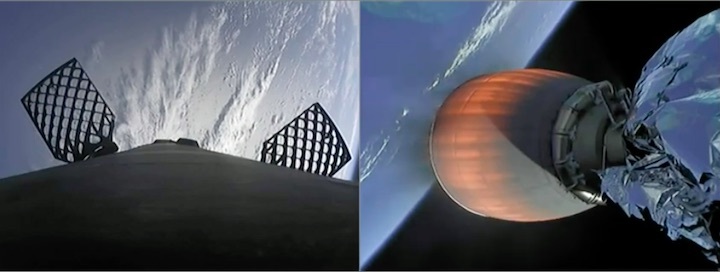
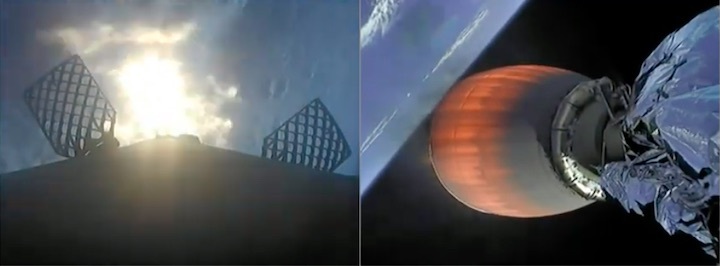
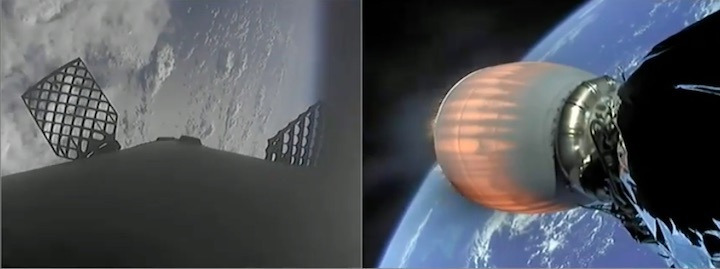
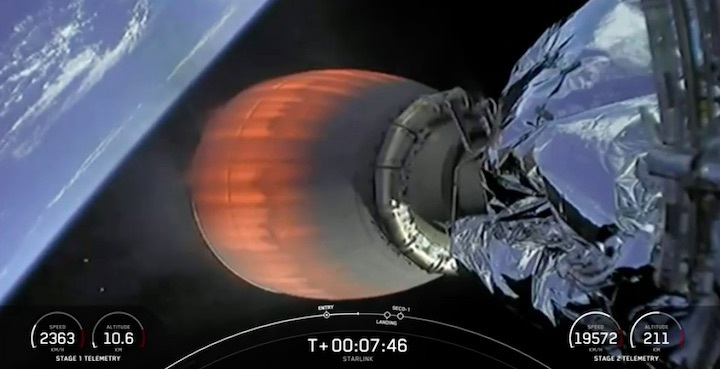
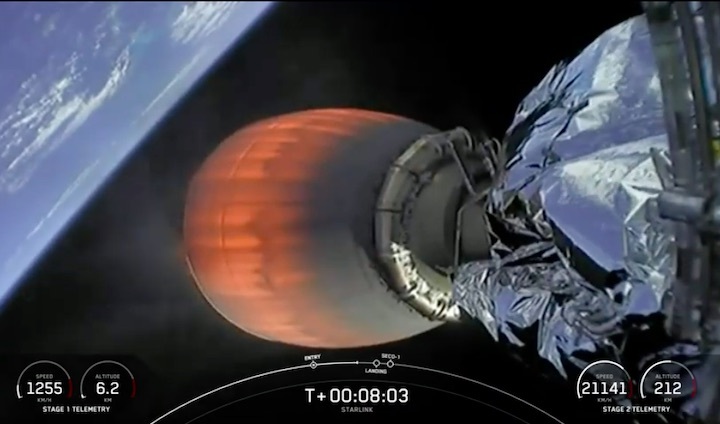
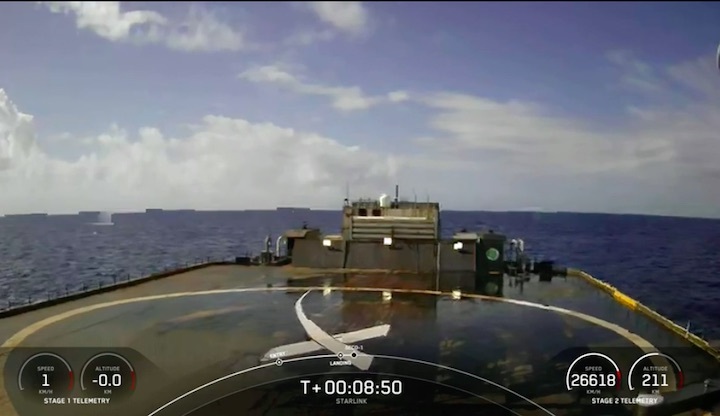
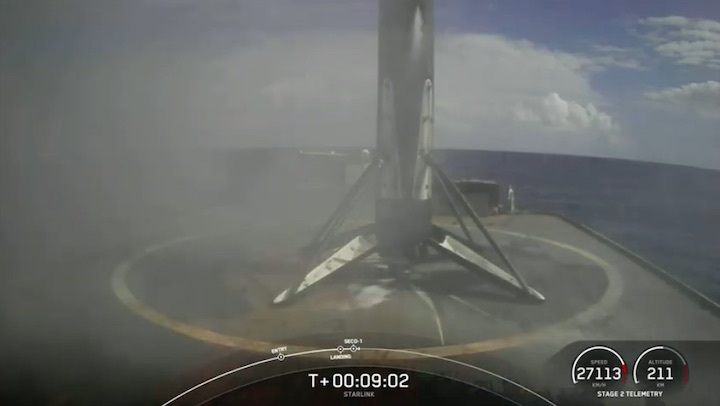
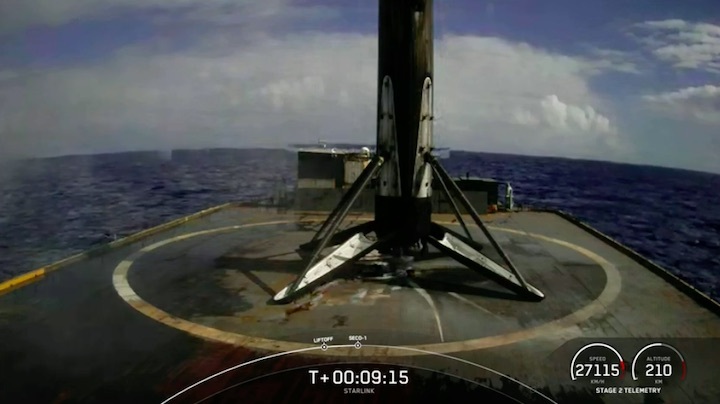
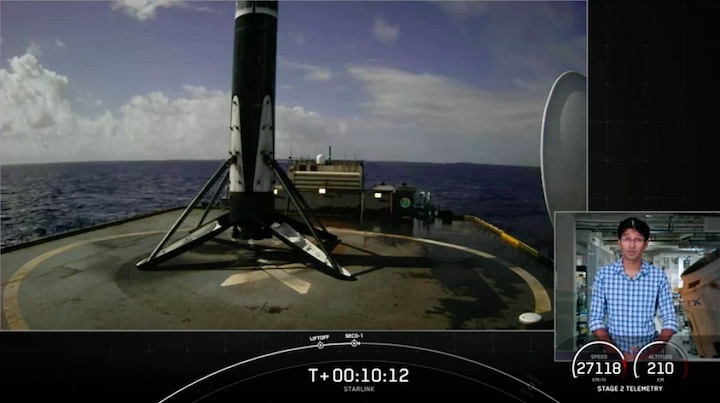
Quelle: SpaceX
